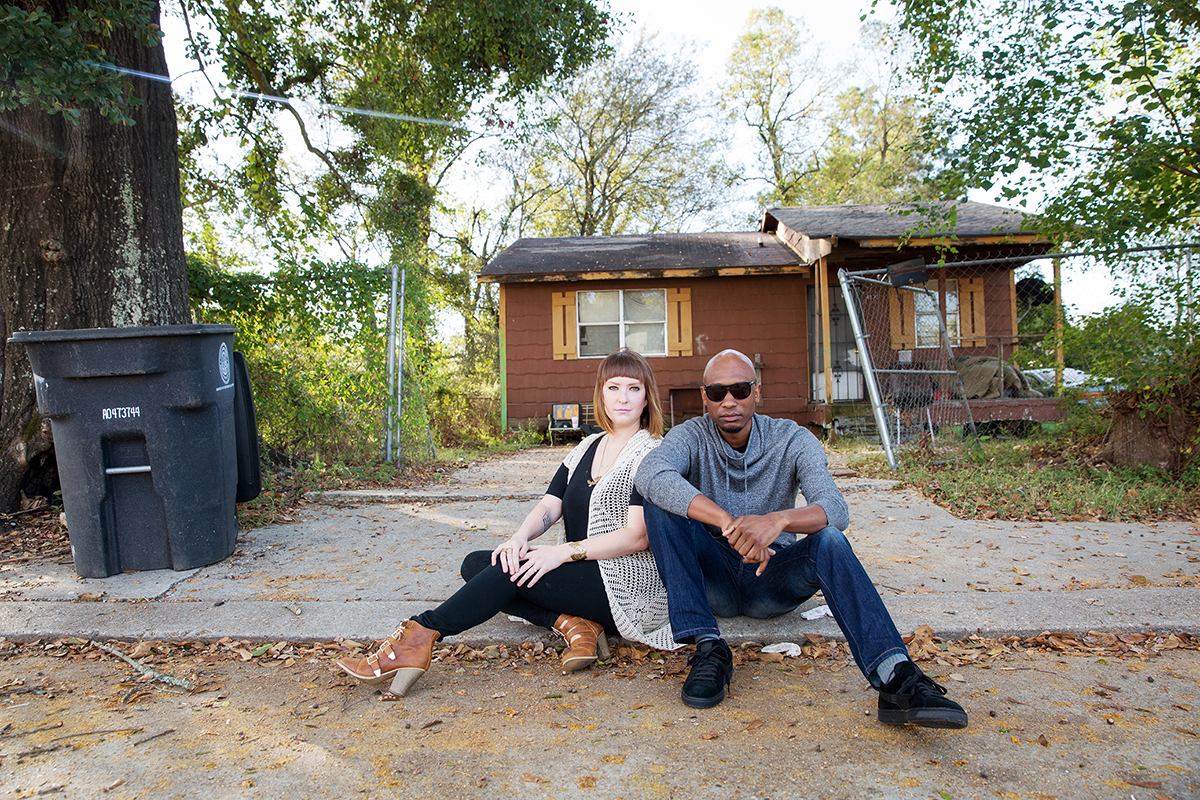
How a project on social media is highlighting stories of struggles in north Baton Rouge
A mother working multiple jobs, a student worried about the future after graduating, families facing hardship after the flood. These are stories familiar to most of us. But told against the backdrop of the low-income and often-overlooked north Baton Rouge, they take on a different meaning.
These are people who have felt voiceless for a long time, but through an online series, they are being heard.
Meghan Matt and Walter McLaughlin’s Thin RedLine Project is a “Humans of New York”-like photojournalism series that seeks stories of hope in north Baton Rouge and shares them on its website and social media.
|
|
Matt, 34, is a stay-at-home mom who helped organize the local annual Mother’s Day production “Listen to Your Mother.” Walter “Geno” McLaughlin, 35, works in healthcare outreach and moonlights as a singer. Matt and McLaughlin met as students at Lee High School. The Thin RedLine Project was Matt’s brainchild, and she soon reached out to McLaughlin to help bring the series to life.
We asked the two friends how their Thin RedLine Project came to be.
What is “redlining”?
Redlining can be defined as the denial of services to residents based on the racial makeup of their neighborhood. The term has been around since the 1930s, when federal housing practices color-coded and ranked areas based on ethnic factors and favored those that were majority white and affluent. Minority neighborhoods were literally outlined in red on maps used by loan agencies, which led to a lack of homeowner loan opportunities. Though the practice was outlawed in the 1960s, redlining still pops up in more subtle ways in large cities, and it’s not uncommon in smaller metro areas.
In north Baton Rouge, two examples often cited are the “food deserts,” where local organizations have been trying to improve access to fresh food, and the lack of health services after the closing of Earl K. Long Hospital and Baton Rouge General’s Mid City emergency room.

What sparked this project?
Matt: After what happened to Alton Sterling, I got tired of the ignorance that people had of people who don’t look like them or live by them. I wanted a way for people to tell their own stories, using our platform, to dispel the myths that people have of north Baton Rouge. It’s for the people who don’t ever cross over Florida Boulevard who form so many misconceptions. I just wanted to be able to break down some of those walls.
Are you seeking to show a theme through the stories?
McLaughlin: It’s just highlighting the people and their stories of triumph, sadness, flooding, protests, business owners, healthcare, all types of things. While there are a lot of issues, there are also a lot of everyday stories. We want to connect people who haven’t had as much exposure to people from these sides of town and show them that they are very normal, everyday human beings who want the same things you want.
How do you find the people to feature?
Matt: Initially we had a list of several people who we identified as having powerful stories, and then transitioned into more of an outreach phase where we spend time in the community at different events. As things have taken off, we are now seeing submissions and leads come in, something we’re extremely excited about because it means people have begun to connect with our purpose.
McLaughlin: We usually just meet people at community events and chat with them and ask if they’d want to participate. Some people we have found just walking around neighborhoods and through relationships we already have.
What’s been one of the most compelling stories?
Matt: James—a single father living in north Baton Rouge who has two jobs, but still fought to gain custody of his disabled son. He taught his son to use his muscles, and while he can’t walk, the son can move about on his own because his dad has empowered him. This story is so important because it busts the deadbeat dad myth—James fought for his son for over a year.
What’s in the future for the Thin RedLine Project?
McLaughlin: Thin RedLine will always be the roots of what it is, but there’s always room for more things to be inserted into the narrative and the platform, as long as it’s not distracting from the core or the focus.
Matt: It will remain a photojournalism project at its core. As we move forward, we hope to find new and creative ways for people to tell their stories. That might be hosting a speaking series, open mic nights and pop-up galleries. I think you’ll start to see some collaborative projects as well and also more series centered around a specific theme.
Learn more about Thin RedLine at ThinRedLineProject.com and follow the stories
on Instagram @ThinRedLineProject.
This article was originally published in the December 2016 issue of 225 Magazine.
|
|
|
